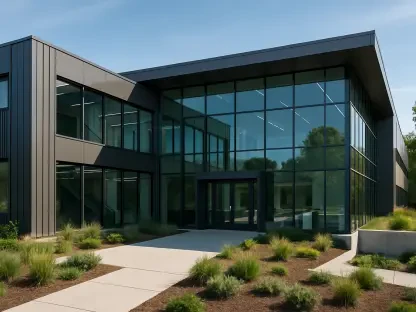In the rapidly evolving landscape of medical technology, a seismic shift is underway as foundation models, an advanced form of artificial intelligence, begin to redefine the boundaries of innovation, particularly in radiology and medical imaging. These sophisticated systems, trained on immense and often unlabeled datasets, stand out for their ability to process a wide array of data types—ranging from images and text to patient histories and genomic information. Unlike traditional AI tools that focus on narrow tasks, foundation models exhibit remarkable versatility, adapting to diverse challenges with ease. Their emergence has sparked significant interest among industry leaders and regulatory bodies alike, positioning them as a potential game-changer in addressing critical healthcare needs. This exploration delves into the transformative impact of foundation models, examining their unique capabilities, the excitement surrounding their adoption, and the hurdles that must be navigated to ensure their effective integration into clinical practice.
Unveiling a New Era in AI for Healthcare
The buzz surrounding foundation models in medtech is palpable, driven by substantial investments from major players like GE Healthcare, Philips, and Aidoc, each pushing the boundaries of what AI can achieve in clinical settings. GE Healthcare, for instance, has pioneered an MRI research model that showcases the technology’s potential, while Philips has partnered with cutting-edge tech firms to advance similar initiatives. The spotlight on these models intensified at the 2023 Radiological Society of North America (RSNA) meeting, where they emerged as a central theme in research presentations and discussions. This growing focus isn’t limited to corporate spheres; even the U.S. Food and Drug Administration (FDA) has taken an active interest, working to establish frameworks for regulating devices that incorporate these advanced systems. Such widespread attention underscores a collective recognition of foundation models as a pivotal force, poised to reshape diagnostic and therapeutic approaches in profound ways.
Beyond the enthusiasm, foundation models represent a fundamental departure from conventional AI paradigms, offering a glimpse into a future where adaptability reigns supreme. Defined by experts at Stanford as AI systems trained on vast, unlabeled datasets, these models can handle multiple data types and tackle tasks they weren’t explicitly trained for, such as identifying previously unseen diseases. Since the term was first coined in 2021 at Stanford, early implementations like Google’s Med-PaLM—a model designed for medical queries—have demonstrated their potential to transcend the limitations of traditional tools. In contrast to older deep learning models that rely on meticulously labeled data for specific conditions like pneumonia, foundation models draw from millions of diverse inputs, rendering manual labeling obsolete. This scalability empowers them to detect rare conditions, such as brain aneurysms, with a precision that narrower AI systems struggle to match, marking a significant leap forward in diagnostic capabilities.
Balancing Innovation with Practical Challenges
Industry advocates, including companies like Aidoc, champion foundation models as revolutionary, arguing that they accelerate the development of diagnostic tools while enhancing accuracy. Claims suggest these models can drastically reduce the time needed to create effective AI solutions, offering a faster path to improved patient outcomes. However, cautionary voices from academia and clinical practice temper this optimism, highlighting that an “out-of-the-box” foundation model often falls short compared to specialized AI unless it undergoes tailored training with relevant data. Nina Kottler, associate chief medical officer at Radiology Partners, points to their strength in identifying rare events—likening the task to finding a “needle in a haystack”—thanks to the breadth of their training data. Yet, without concrete, publicly available evidence to support superior performance, skepticism lingers about whether these models truly deliver on their promised real-world impact.
Evaluation and regulatory oversight present additional complexities in the adoption of foundation models, as current frameworks struggle to keep pace with their advanced capabilities. While the FDA has granted clearance for specific applications, such as Aidoc’s rib fracture triage tool through the 510(k) process, broader models that integrate diverse data like language and images lack standardized guidelines. Hospitals, in turn, often resort to basic evaluation methods, testing vendor models against local datasets with varying degrees of rigor. Experts like Magdalini Paschali from Stanford advocate for more robust testing protocols, including detailed metrics and stress testing with input from radiologists, to ensure reliability, especially when detecting uncommon conditions. This gap between potential and proven effectiveness highlights the urgent need for cohesive strategies to assess and validate these models in clinical environments, safeguarding both accuracy and patient safety.
Addressing Radiology’s Pressing Needs
One of the most compelling drivers behind the push for foundation models is the acute shortage of radiologists in the U.S., coupled with an ever-increasing volume of imaging studies that strain existing resources. These models offer a promising solution by enhancing efficiency, with the potential to significantly reduce the burden on overworked clinicians. Kottler notes that while traditional AI tools can take up to six months to develop, iterations of foundation models can be rolled out in mere weeks, providing a rapid response to urgent needs. By automating routine tasks and flagging critical findings, they could free up radiologists to focus on complex cases and direct patient care, addressing systemic challenges in the field. This efficiency isn’t just about speed; it’s about creating a sustainable workflow that prioritizes quality outcomes amidst mounting pressures.
Moreover, the adaptability of foundation models positions them as a vital tool in transforming how radiology operates on a broader scale, potentially reshaping diagnostic timelines and resource allocation. Their ability to process multi-modal data—combining imaging with textual reports or genomic insights—enables a more holistic approach to patient analysis, something traditional models struggle to achieve. This comprehensive perspective could lead to earlier detection of conditions that might otherwise go unnoticed, improving prognoses for countless individuals. However, for this vision to materialize, the technology must be paired with rigorous validation to ensure that efficiency gains do not come at the expense of diagnostic precision. Bridging this gap will be essential to fully harnessing the power of foundation models in alleviating the workload crisis while maintaining the high standards expected in medical practice.
Bridging Perspectives for a Unified Path Forward
The discourse around foundation models reveals a nuanced tension between industry optimism and academic caution, reflecting the technology’s nascent stage in medtech applications. Corporate entities paint a bright future, emphasizing the models’ capacity to handle complex, multi-modal data and streamline innovation cycles, which could redefine standards of care. In contrast, academic experts like Stanford’s Akshay Chaudhari urge restraint, pointing to the absence of definitive evidence linking theoretical benefits to tangible clinical outcomes. This dichotomy underscores a broader consensus that while foundation models mark a significant evolution from narrow AI, their integration into healthcare demands careful scrutiny. Unresolved questions about accuracy and real-world efficacy persist, necessitating a balanced approach that weighs potential against practicality to avoid overpromising on unproven technology.
Ultimately, the successful deployment of foundation models in medtech rests on fostering collaboration among technologists, clinicians, and regulators to navigate the uncharted waters of this innovation. Their ability to process expansive datasets and adapt to diverse medical tasks holds immense promise for transforming diagnostics, but only when underpinned by robust evaluation frameworks and clear standards. Reflecting on the journey thus far, it becomes evident that ensuring reliability and relevance in clinical settings is paramount. As stakeholders work together to refine testing protocols and establish transparent metrics, the focus shifts to actionable steps—building partnerships, investing in customized training, and advocating for regulatory clarity. These efforts lay the groundwork for foundation models to not only meet but exceed expectations, shaping a future where technology and human expertise converge to elevate patient care.









